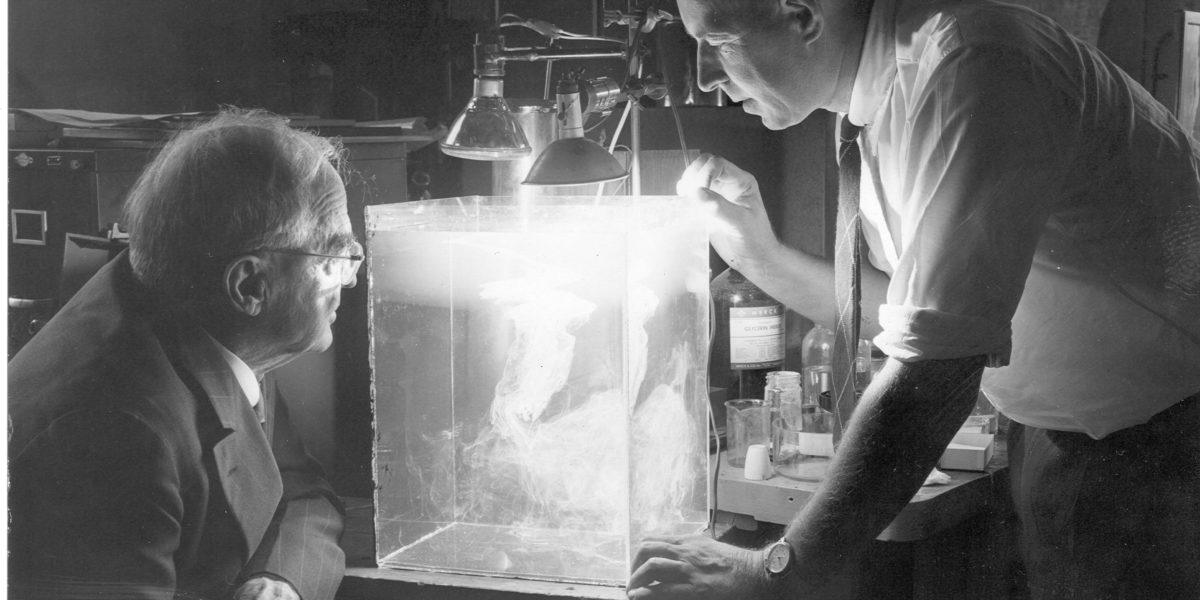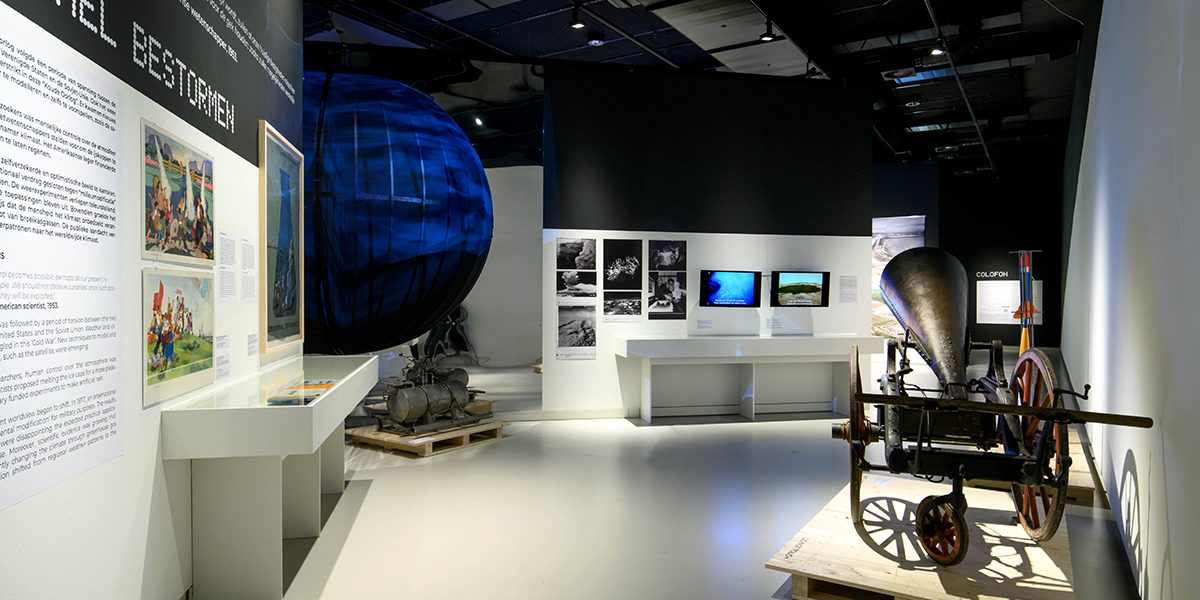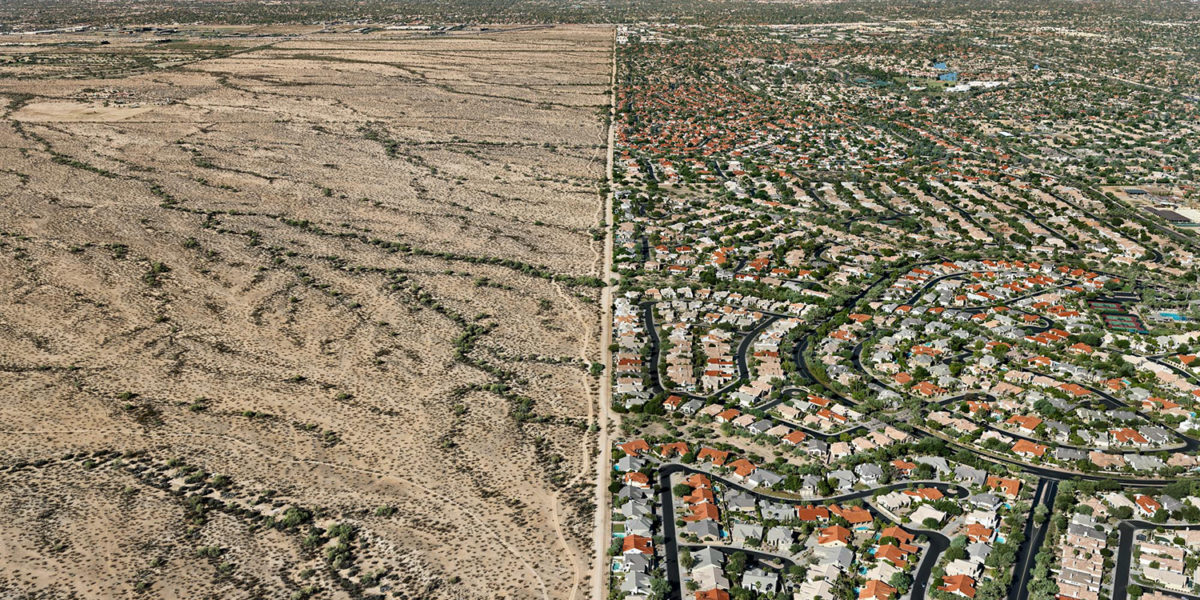“Most of us find ourselves enmeshed in institutions and economies that are relentlessly asking what more can we take from the earth. Here, poised on the cusp of climate catastrophe, the question we need is: What does the earth ask of us?.”
– Robin Wall Kimmerer, Indigenous (Potowatomi) American author and ecologist, 2022.[1]
Climate change is no simple problem with a ready-made solution. It is rather a gigantic tangle of complicated problems. British philosopher Timothy Morton calls it a ‘hyperobject’: we can never quite grasp it. It turns our usual ideas about humans and the environment completely upside down.
Discussions about our changing climate therefore always raise other questions as well. Are humans above nature, or are we merely one species among others? Should we use technology to correct our mistakes, whatever the cost? Or should we be adopt a humble position before nature? Is it time to admit that we have lost control?
There is no pure, ‘pristine’ nature that we can return to. As the climate changes, so does everything else. So does the way we do politics, travel, work, eat and consume. Changes affecting the whole planet require a global vision of cooperation, justice and responsibility. Can humanity design such a world?
Low-tech
Unbridled economic growth brought us enormous prosperity and health over the past centuries, but also inequality and ecological devastation. For this reason, since the 1970s, some activists have been advocating ‘degrowth’. According to this idea, our society should not pursue economic growth as an end in and of itself, but instead aim for human well-being in balance with nature. Critics consider this idea unrealistic. After all, there is a link between growth and well-being. Belgian journalist Kris De Decker explores how we can still be happy with less. On his solar-powered website, he explores energy-saving technologies of the past. Do these low-tech designs offer an alternative to our complicated, energy-guzzling gadgets?
Traditional knowledge
Areas managed by their traditional indigenous communities, such as the indigenous peoples of the Americas or the Aboriginal Australians, are often ecologically healthier and have more biodiversity. The colonial settlers who occupied these continents considered the land a ‘dead’ resource. However, many traditional communities consider themselves part of a wider and living ecosystem. Using innovative technologies, they use nature’s processes to their benefit. Australian architect Julia Watson argues for the revaluation of this traditional knowledge. Together with local communities in Iraq, Indonesia and India, she designed a city of the future using traditional technologies.
No design on stolen land
The organisation OPSYS (Open Systems) was founded in 2001. It consists of scientists, architects and activists – mainly from the US and Canada. With pamphlets and publications, OPSYS points out the links between contemporary design, architecture and colonialism. In 2020, it coined the slogan ‘no design on stolen land’. Geo-engineering and mega-projects, the organisation argues, are echoes of a system based in exploitation and oppression. In addition, indigenous activists reject a neo-colonial appropriation of traditional knowledge. Equitable design in times of climate change cannot exist without political autonomy, land rights and meaningful consultation for long-oppressed indigenous peoples.
Nature restoration
Nature restoration or ‘rewilding’ is a philosophy that seeks to give more space to nature. In this view, weakened or collapsed ecosystems should be restored as efficiently as possible. This can be done, for instance, by reintroducing ‘keystone’ animal or plant species. The foundation ARK Rewilding advocates the restoration of flat oyster beds in the overfished North Sea. The oysters then provide shelter and food for other species. Before such restoration is possible, however, trawlers and miners must leave the North Sea alone. Another obstacle is ‘nature amnesia’ or ‘shifting baseline syndrome’. Many authorities no longer consider flat oyster beds ‘natural’, as they disappeared a long time ago.
Solarpunk
What comes after the end of the world? In order to deal with climate change, we must first be able to believe in a hopeful future. This is the main motivation behind ‘Solarpunk’. Solarpunk is a utopian genre of ideas, designs and artworks. Its definition is deliberately loose and the genre exists mainly on the internet. Solarpunk enthusiasts share photos of traditional Arab or African architecture, for example, or discuss organic farming. They embrace fantasy in their ideas. For instance, the work of Belgian architect Luc Schuiten is a popular reference point. Schuiten sketches imaginative future cities rooted in ecological symbiosis.
[1] “‛Braiding Sweetgrass’ Author Offers Indigenous Prescription to Address Climate Change”, CU Boulder Today | University of Colorado Boulder, accessed June 19, 2024, https://www.colorado.edu/today/2022/12/01/braiding-sweetgrass-author-offers-indigenous-prescription-address-climate-change.






